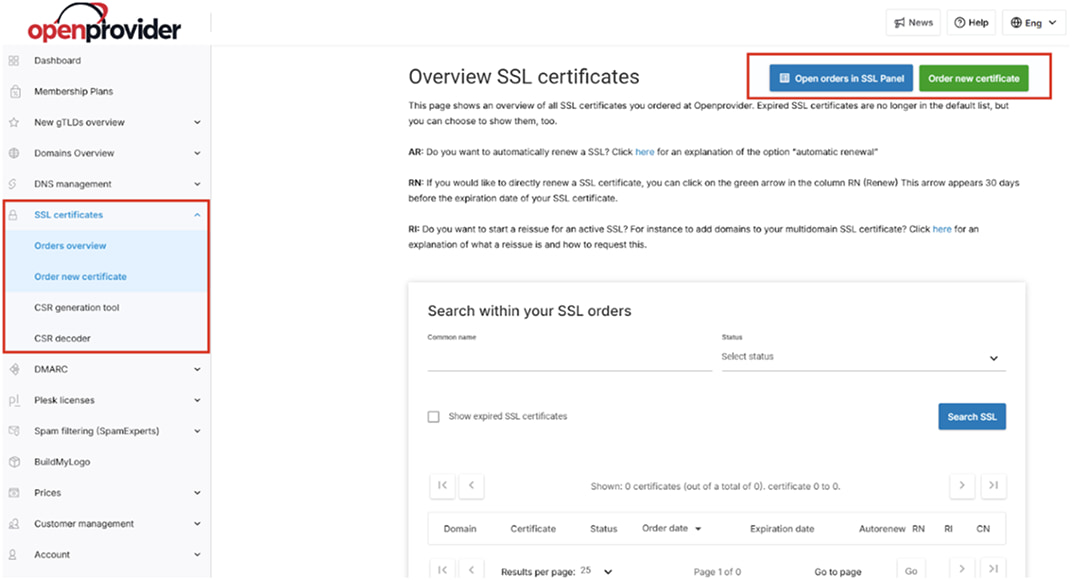SSL certificate errors impede domain owners and resellers to make their digital assets secure and ready to sell.
As businesses know that browsers now block or warn against any site without valid SSL encryption, even a small error on a single domain in your portfolio can lead to client frustration, site abandonment, or lost business for both you and your customers.
Before exploring common SSL errors and how to solve them, let’s clarify what SSL and TLS are and why they’re essential for digital assets.
What is an SSL/TLS certificate and why do businesses need it?
For any business operating online today, trust and security are non-negotiable.
For web agencies and hosting companies managing client corporate and e-commerce websites, or even just hosting domains, protecting data and customer privacy is essential.
That’s where SSL/TLS certificates come in.
SSL (Secure Sockets Layer) and TLS (Transport Layer Security) certificates are digital files that secure communication between a user’s browser and your server. They encrypt sensitive information like login credentials, credit card details, and personal data, making sure it can’t be intercepted or tampered with. We explore the differences between SSL and TLS in detail in this infographic.
But encryption is only half the story. SSL/TLS certificates also authenticate your website’s identity, assuring visitors that they’re connecting to the real site, not an impostor.
That’s why browsers show padlocks, HTTPS prefixes, or even full-page warnings when an SSL certificate is missing, misconfigured, or expired.
In short, SSL/TLS certificates are not just technical add-ons: they protect users, ensure that the web asset can perform organically, and strengthen digital trust.
And if you’re a reseller, web host, or digital agency, offering SSL certificates to your clients is a must-have service for long-term trust and retention.
Reselling SSLs profitably revolves around smooth management and predictable ROI. Check how Premium SSLs help you tackle both.
What is an SSL certificate error?
An SSL certificate error happens when a browser detects a problem with a website’s SSL/TLS certificate.
Instead of loading the site, users are met with a warning message, sometimes subtle, sometimes alarming. These errors signal that the connection between the browser and the server may not be secure.
For businesses, SSL certificate errors can lead to lost trust, reduced traffic, and even revenue drops. Imagine a potential customer landing on your website only to be greeted by a full-screen security alert telling them it’s unsafe to proceed.
Common causes range from expired certificates and incorrect domain configurations to missing certificate chains or unsupported certificate lifetimes. Understanding these errors (and knowing how to fix them) ensures your site stays accessible, secure, and trusted by users and search engines alike.
Troubleshooting the most common SSL certificate errors
SSL certificates play a critical role in securing websites and building trust with users. But even experienced web hosts, developers, and digital agencies run into SSL certificate errors from time to time. Let’s break down five of the most frequent SSL issues and how to resolve them quickly and efficiently.
1. SSL Certificate not trusted
This error usually occurs when the browser can’t verify the certificate’s issuer. It often happens when the SSL certificate is self-signed or issued by a Certificate Authority (CA) that the browser doesn’t recognize.
How to fix it:
- Always use a certificate from a reputable CA.
- Check your server configuration to make sure the correct intermediate certificates are installed.
- If you’re using Openprovider, select from our range of trusted SSL providers and double-check your CA bundle installation.
Encountering problems with not trusted certificates during the SSL installation with Openprovider? Consult this guide.
2. SSL Certificate name mismatch
This happens when the domain name in the browser doesn’t match the domain listed in the SSL certificate. For example, your site is accessed via www.yourdomain.com, but the certificate was only issued for yourdomain.com.
How to fix it:
- Check the certificate’s Common Name (CN) and Subject Alternative Names (SAN).
- For multi-domain needs, consider purchasing a wildcard or multi-domain SSL certificate.
- With Openprovider’s SSL portfolio, you can easily find certificates with broad domain coverage to avoid this issue.
3. Expired SSL certificate
An expired certificate is one of the most common SSL certificate errors. Browsers will block access or show a security warning until it’s renewed.
How to fix it:
- Set up automated reminders or enable auto-renewal through your SSL provider.
- Regularly audit your SSL certificates, especially if you manage multiple client domains through a reseller platform like Openprovider.
In the Openprovider Control Panel, you can monitor certificate expiration dates across your portfolio in one place.

4. Incomplete certificate chain (missing intermediate certificates)
Without a full certificate chain, browsers can’t trace back to a trusted root CA. Users will see trust errors, even if your primary certificate is valid.
How to fix it:
- Ensure that you install all intermediate certificates provided by your CA during SSL setup.
- Use online tools like SSL Labs’ SSL Test to verify your chain.
- Openprovider customers can download the complete CA bundle directly from the Reseller Control Panel after purchasing a certificate.
5. Certificate lifetime greater than 398 days
Since September 2020, major browsers and operating systems no longer trust SSL certificates with a validity period longer than 398 days.
Attempting to use an SSL certificate that exceeds this limit will result in trust errors.
How to fix it:
- Always issue SSL certificates with a validity period of 398 days or less.
- If you’re using older certificates, plan for early renewal to avoid service disruptions.
- Openprovider’s SSL offerings automatically comply with the latest industry standards, making it easy to stay in line with browser trust requirements.
Reselling SSLs via a trusted partner sounds like a no-brainer, but what ROI should resellers expect?
We have created a free whitepaper on SSL for leaders who want to talk numbers, not just features.
Keep your business and your customers protected
SSL certificate errors make users lose trust in seconds. Whether it’s an expired certificate, a name mismatch, or an outdated certificate lifetime, each error is a potential barrier between you and your customers.
The good news? With the right knowledge and tools, these issues are easy to prevent and fix. At Openprovider, we offer a wide range of SSL certificates from trusted Certificate Authorities, full API support for automation, and a Reseller Control Panel that makes SSL management simple, even across large client portfolios.
Staying on top of your SSL health means keeping your business reputation intact, improving SEO, and delivering a secure online experience for every visitor.
If you’re ready to take control of your SSL management, explore our SSL solutions today or get in touch with our sales team for expert guidance.


